Ertach Kernow - Britain's most beautiful branch line here in Cornwall
My eye was caught this week by an article written sixty years ago by the well-known Cornish historian and author Cyril Noall, entitled ‘It runs from St Erth to St Ives and it’s the ……Most beautiful branch line in Britain’. Now Cyril Noall knew a thing or two about Cornwall, so perhaps this was an opportunity to encourage people living in Cornwall to enjoy a trip on this beautiful branch line. Many people have told me that when visiting St Ives, they take the train, I never have, but it’s now on my itinerary for an experience before the tourist crowds visit this summer.
Cyril says in his article ‘It has often been claimed that no other stretch of railway line of comparable length in the whole of Britain passes through such enchanting and diversified scenery as the little 4.5-mile branch which connects St. Ives with the Cornish main line at St. Erth. Within this short distance the traveller is conveyed through rapidly-changing vistas of countryside, riverway, towans and sea, the line often winding tortuously along the cliff-side, with only a supporting wall, in some places, to save it from toppling into the waves far below. Apart from the loveliness of its surroundings, however, the railway possesses a considerable technical interest, for its construction presented a number of engineering problems which were not readily or easily solved.’
St Erth Railway Station was opened by the West Cornwall Railway in March 1852 . At that time, it was known as St Ives Road until the opening of the St Ives branch line. Authorisation for the construction of the St Ives line was given on 7th July 1873. This was the last broad-gauge line opened in Cornwall and promoted by the Associated Companies after they had taken over the West Cornwall Railway. It was completed on 1st June 1877 and converted to standard gauge between 20th and 23rd May 1892.
The land on which the railway was built was provided free of charge by Mt C T Praed, a London banker and Mr T S Bolitho the owner of the Tregenna Estate. The total cost of construction was £70,000. Although the distance was not particularly long there were several challenges to completion of the line. Part of the line runs through a rock cutting so hard that Cornish miners experienced in cutting through hard rock had to be employed. Without the technology we have today it was their experience and know how that enabled the construction to continue.
Cyril enthused about the 78-yard long Carbis Viaduct that was constructed to carry the track, this being 78 feet high with four arches each of a 40-foot span. The stone used is local Towednack granite. He was most impressed by the view of Carbis Bay Beach and St Ives Bay. On the other side of the viaduct was another obstacle to be overcome by Mr Thomas Lang the Liskeard engineer constructing the line. Mining had taken place around St Ives, as with elsewhere in Cornwall, and the land provided a poor foundation. This was overcome by driving stout piles down into the bedrock on which the railway lines would rest.
Many of the views that Cyril Noall would have seen from the train and mentioned in his article have no doubt changed much in the past 60 years and maybe unrecognisable to people today. However, it seems that one thing hasn’t changed and that is the scenic nature of this short train journey as testified by comparatively recent Tripadvisor comments
‘Lovely Surprise...We had no idea what wonderful views were available on this short train journey from St Erth to/from St Ives until we had to use the service to get to St Ives from London. I should have realised as I saw cameras being prepared and then wow.! Beautiful white sandy beaches and bays make sure you stand/sit on the right-hand side when approaching from St Erth to get the best pictures.’ 30 glorious minutes…’Boarded the 2.33 from St Ives for the 4 stations to St Erth. Fabulous scenery and a welcome gentle journey in the Spring sunshine. Stayed on the train and rode back to St Ives. A unique experience for £4 each.’ ‘Take the train…Park and ride and take the train , sit on the right-hand side In the direction of travel and you will get the most fantastic views of Carbis Bay and St Ives. At St Ives station it is a short walk down into the town and then to the beach.’
It was obviously an early popular tourist trip as during the first decade of the 20th century thirteen trains ran back and forth between St Ives and St Erth daily, with four on a Sunday. Towards the end of the 1950’s greater use of motor vehicles led to falling passenger numbers and the lines financial viability was in question. However, By the end of the 1970’s following introduction of the very successful park and ride at Lelant Saltings they had increased to over twenty. Upgrading to the park and ride facilities at St Erth in June 2019 will encourage even greater interest in visiting St Ives by train, avoiding St Ives parking issues. Since 2001 numbers of people travelling on this line have increased by 68%. To think that this was one of the lines that faced the Beeching axe in 1963, shortly after Cyril Noall wrote his article praising this beautiful railway journey. Cornwall is fortunate that it was saved by Barbara Castle the then Minister for Transport along with the Looe Valley line, which also remains open and operating successfully with increasing numbers of passengers.
St Ives has much to offer residents living in Cornwall as well as tourists. With its galleries and exhibitions that includes the Tate St Ives, Barbara Hepworth Museum & Sculpture Garden and Bernard Leach Pottery there is plenty to enjoy. The numerous cobbled street with fishermen’s cottages and St Ives Town Museum, illustrating the history of St Ives looking back to its early days as an important fishing village, is a day out in itself.
This article is dedicated Cyril Noall who was born in St Ives to Thomas Wall Noall and Mary Jane Noall (née Major) on 19th May 1918. By the age of 21 he was a journalist and would later become a prolific author of books relating to Cornwall, especially towns to the far west. His impressive output covered a number of books on St Ives and at least 25 others about Cornwall. These included mining, wreck and rescue, lighthouses, fishing, stagecoach travel, and more. Besides these he wrote countless articles for newspapers, magazines and journals. Cyril’s well researched books and articles are a cornerstone for those interested in Cornwall’s historic past. He was Curator at the St Ives Museum and was initiated as a bard of Gorsedh Kernow at Callington in 1959, taking the bardic name ‘Scryfer Por’ya’, meaning Writer of St Ives. He died at Nevada, 3 Rosewall Terrace, St Ives on 17th April 1984 aged just 65.
There seems little information online about Cyril Noall, who contributed so much to researching and preserving knowledge of St Ives and Cornwall’s historic heritage. This brief summary has been gleaned from the scant information available online and hopefully there are readers with more information about Cyril to share.
![Railway - St Erth to St Ives [Google Maps] Railway - St Erth to St Ives](https://www.cornwallheritage.com/wp-content/uploads/2021/04/Railway-St-Erth-to-St-Ives-Google-Maps-300x269.jpg)
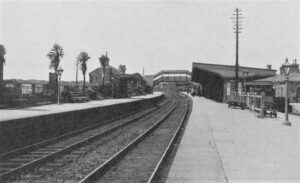
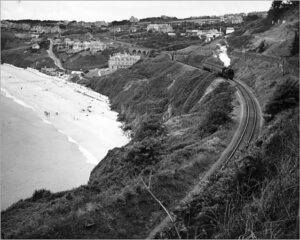
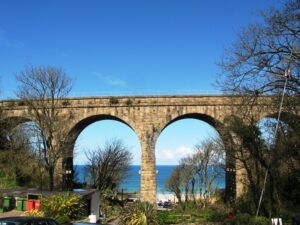
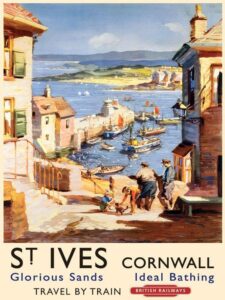
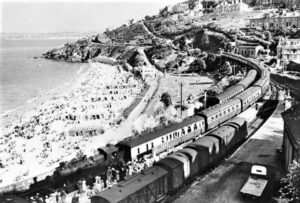
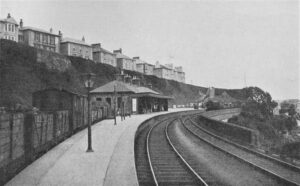
![St Ives Museum [1] St Ives Museum](https://www.cornwallheritage.com/wp-content/uploads/2021/04/St-Ives-Museum-1-300x225.jpg)
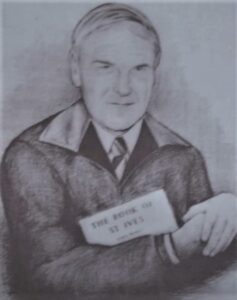
![[41] Voice - Ertach Kernow-070421A - Britains most beautiful branchline [S] Ertach Kernow - Britain's most beautiful branch line](https://www.cornwallheritage.com/wp-content/uploads/2021/04/41-Voice-Ertach-Kernow-070421A-Britains-most-beautiful-branchline-S-238x300.jpg)
![[41] Voice - Ertach Kernow-070421B - Britains most beautiful branchline [S] Ertach Kernow - Britain's most beautiful branch line](https://www.cornwallheritage.com/wp-content/uploads/2021/04/41-Voice-Ertach-Kernow-070421B-Britains-most-beautiful-branchline-S-232x300.jpg)